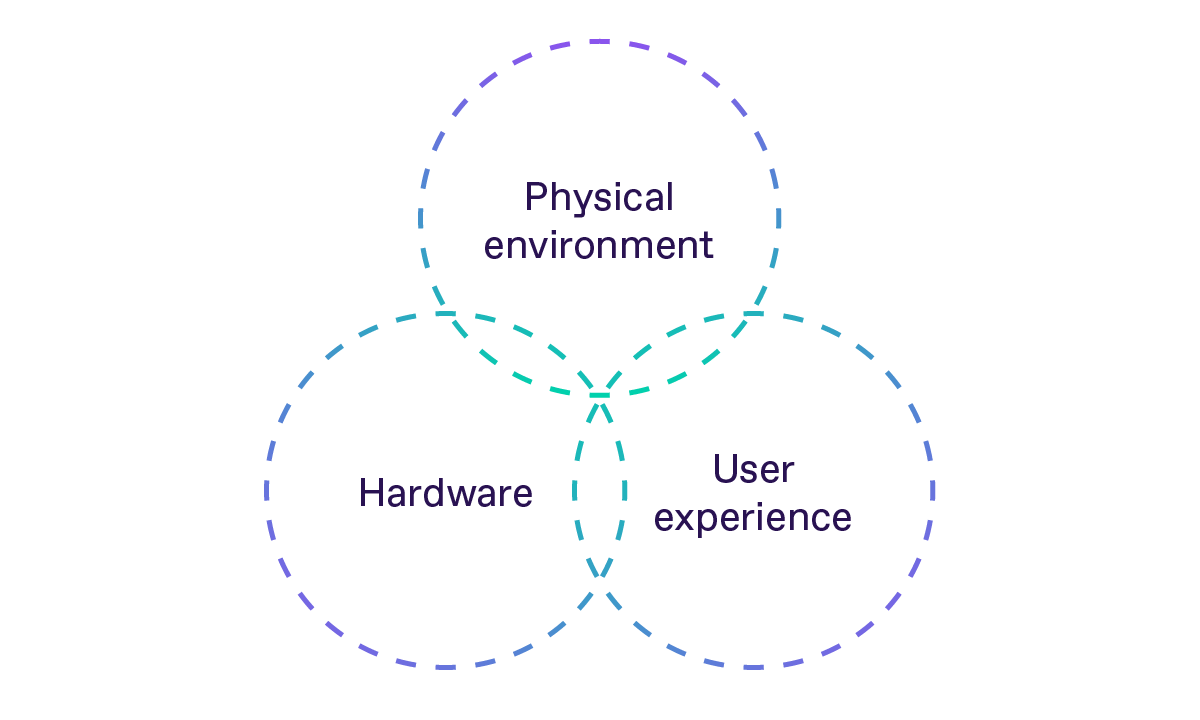

31st October 2022
Three focus areas for designing accessible EV charging
Interpretation of the recent BSI guidance will be key if we are to see meaningful change in accessible EV charging design.
The release of guidance from the BSI to support the delivery of more accessible EV public charging infrastructure signals a fantastic step forward for motorists in the UK.
PAS 1899:2022 is a new specification on accessible public charge points. Released by the BSI on the 11th of October 2022, the guidance is a key resource for anyone providing charging facilities, whether public or private.
The challenge for organisations tasked with the provision or procurement of public charging services is interpreting the guidance to deliver genuine improvements in accessibility in a wide variety of contexts and hugely varying sites.
Urban Foresight has been working for more than two years to deliver more accessible charging infrastructure for motorists across the UK. We have supported local authorities, charge point manufacturers, installers and charities to inform policy, design innovative solutions and develop strategies to meet the needs of all users.
Our research has confirmed that a critical step to developing a more accessible EV charging network lies in the early-stage consideration of three key elements found in any charging station: physical environment, hardware and user experience.

Physical environment
Considering the physical environment around the charge point includes assessing obstructions to access such as bollards, kerbs, bay size, street clutter, and signage as well as the location of the charge points.
We recommend all off-street EV parking bays reflect the Blue Badge off-street parking bay requirements of 6m long and 4.8m wide. This not only provides a safer more accessible space for disabled people but a vastly improved user experience for a range of motorists, including pregnant women and parents with children.
In 2021, Urban Foresight was commissioned by Plymouth City Council to develop guidelines for the installation of electric vehicle charging infrastructure that is as accessible as possible. For more information about the challenges felt by motorists with mobility issues and our recommendations please see an abridged version of this guidance on our website, Guidance on Improving Electric Vehicle Charging Infrastructure.
Hardware
This encompasses all physical elements of the EV charging infrastructure, including height of chargers, charging cables, cable management devices, socket heights, method of charging initiation and the payment process.
We have worked closely with manufacturers, local authorities, charities and disabled motorists to identify key issues with existing hardware. This research highlighted cable management as a core barrier for users, in particular the weight and rigidity of cables.
We have gone on to work with a number of organisations to make existing infrastructure more accessible.
Working with project partner, Duku Design we developed and tested a motorized cable management system that automatically coils and uncoils the charging cable for users. Click here to see an early-stage prototype of the device in action.
In our work with Dundee City Council to develop an accessible charging hub, we specified the use of cable management systems. The cables subsequently installed have brightly coloured covers to make them easier to see and reduce the risk of tripping.
User experience
A holistic approach to the user experience involves considering wider elements of a user’s end-to-end charging experience, such as visibility, safety, shelter, and rest points.
This area is perhaps the hardest for providers to tackle. The topography of a site for example may make improving accessibility challenging, but there are a range of measures which can be taken to make leaps forward in usability.
At medium and larger hubs access to short information videos on how to charge, what to do if you encounter a problem, or if there’s an emergency, would support building confidence amongst older, disabled and less tech-savvy groups.
Again, we recommend reading our abridged report, Guidance on Improving Electric Vehicle Charging Infrastructure to gain a deeper understanding of how the hardware, physical environment and user experience should be considered to create a more accessible charge site.
Final thoughts
To conclude, for those involved in the UK’s EV charging supply chain from charge point designers and manufacturers, to local authorities, car park operators, business parks, and retail centers our advice to you all is the same: Think carefully about the three aspects outlined above as you interpret the latest BSI guidance when designing accessible public charge points.
We welcome conversations with any organisations who would like support to ensure that their charging infrastructure not only meets the new guidance but enables all motorists to benefit from the move to a more sustainable transport system.
More Stories


Systems change and community building for a net zero future

Urban Foresight at the 2023 Smart City Expo World Congress

Urban Foresight to lead national net zero accelerator programme

Developing sustainable tourism in Cambodia


![cyberessentials_certification mark_colour [12] cyberessentials_certification mark_colour [12]](https://urbanforesight.org/wp-content/uploads/elementor/thumbs/cyberessentials_certification-mark_colour-12-pnvwipr8zh5rhqz25vzzioz2x8t2zltvu0gwqv4000.png)
